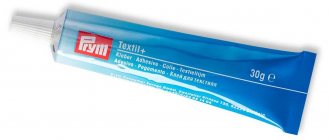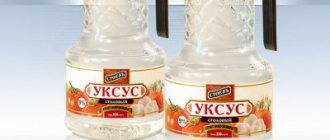When buying finishing material for walls, few people think about what rapport is on any wallpaper. You have to deal with this concept if you plan to use trellises with a certain ornament or pattern. In this case, it is important to correctly determine the amount of material and familiarize yourself with the rules on how to glue this type of wallpaper.
Wallpaper rolls are marked with different values that indicate the main characteristics of the wallpaper. For example, rapport means that the pattern is repeated at a certain distance.
How to correctly combine patterns on wallpaper?
First, we cut off the first strip of wallpaper from the beginning of the roll, and then unwind the second roll of wallpaper and select the pattern, matching the canvas until the pattern matches. After you have prepared several strips, you can start gluing the wallpaper.
Interesting materials:
What is the green card lottery? How many days off are there May holidays this year? How to fry butter, how long? Ibp what is this in accounting? How to eat honeycombs? How long can Melaxen be taken? Melatonin what is it? What benefits does Meldonium give to an athlete? Microsoft visual c what is it? How long should I take Mildronate before training?
Letter designations
Let's take a closer look at what the symbols on the roll wrapper say. They will tell you what the wallpaper is made of.
- A – acrylic
- B – paper
- BB – foamed vinyl
- PV - flat vinyl
- RV – embossed vinyl
- TKS – textile
- STR – structural (for painting)
- STL – glass wallpaper.
What do the patterns on the wallpaper mean
? So, acrylic is a special polymer that is now very often used for the manufacture of various finishing materials. Such wallpaper will be quite affordable for any buyer. They have such a positive property as good breathability. This allows you to use them for walls, both children's and any other room in your apartment.
Paper wallpapers come in single-layer and multi-layer types, which have good resistance to moisture and light. They have always been very popular. And modern technologies have made it possible to improve and expand their properties and characteristics. There are a huge number of types of vinyl wallpaper: structural, hot stamping, based on foamed vinyl, photo wallpaper. The base can be either non-woven fabric or paper. They were first released in the 40s of the 20th century after the American chemist Waldo Simon received a patent for the manufacture of various products from polyvinyl chloride.
Textile wallpaper is distinguished by its high cost and the need for delicate care. After all, their top layer consists of natural materials (linen, cotton, jute), therefore, they are very sensitive to moisture and light. Glass wallpaper is made from fiberglass. Experts recommend using them for finishing walls of non-residential premises. After all, they are very wear-resistant, withstand strong friction and are fireproof.
Decoding the symbols on the wallpaper (video)
Dismantling of canvases.
Why is it important? Not for the next renovation, of course, although... There are situations when we know that we will have to remove the wallpaper after gluing it. For example, in a new house, cracks may appear in the putty when the house shrinks - this is a completely normal situation. In such cases, the canvas is peeled off, the cracks are rubbed out and re-gluing is performed.
- Completely removable . During dismantling, they are completely removed from the wall.
- Partially deleted . The top layer is removed immediately, but the second layer remains on the wall; to dismantle it you need water and a scraper or spatula.
- Removal using tool . The wallpaper is removed in one layer using a scraper.
Classification by color fastness to light
Characterizes the wallpaper's resistance to fading under the influence of sunlight.
| Graphic symbol | Decoding | Short description |
| Weak light fastness | Wallpaper is not resistant to sunlight, the paint will fade quite quickly. Recommended for use on shadow sides | |
| Average light fastness | Over time, signs of fading may appear | |
| Good light fastness | Do not fade when exposed to moderate amounts of light | |
| Very good light fastness | Do not fade with prolonged exposure to direct sunlight | |
| Excellent light fastness | Wallpaper with maximum light resistance. Such wallpapers are not subject to fading; they retain their original color throughout the entire period of use. |
Additional group of pictograms
| Graphic symbol | Decoding | Short description |
| Wallpaper embossed duplex | Double wallpaper, the top layer of which is embossed | |
| Requires special glue | To hang wallpaper you need a special glue. The name of the required glue is indicated on the label | |
| Double cut lapel | An outdated method of wallpapering is an overlap with further removal of the wallpaper seam | |
| Impact resistant wallpaper | Particularly durable wallpaper, resistant to mechanical shocks and scratches (anti-vandal) |
Also, the wallpaper can be marked with symbols indicating its environmental safety and fire safety class.
Environmental and fire safety symbols on wallpaper
In addition, wallpaper produced in EU countries may have special markings, for example, Gütegemeinschaft Tapete eV. This organization has developed special regulations for the quality and testing of wallpaper, which indicate technical requirements, as well as standards regarding harmlessness to health and the environment . The European Union has a special, independent supervisory body that monitors compliance with such regulations.
Wallpaper quality mark
Another marking that meets the requirements of EU directives is the CE mark, which is used for the entire range of construction and finishing products. The CE mark placed on the wallpaper label means that the manufacturer guarantees that the quality of this product complies with the currently valid EU directives regarding the quality of construction products.
EU legislation is very strict in matters of this kind, so the presence of such designations on the label is an additional plus in favor of a particular product.
CE mark for construction products
Important! On each roll of wallpaper, on the packaging label there is a release date and a batch number, sometimes also called a batch number. The batch number is important for the buyer, since wallpaper from different batches may have significant color differences. Therefore, we must strive to buy rolls from the same batch. If this is not possible, rolls from different batches should be distributed on opposite walls, in which case the difference in color will be least noticeable.
Lot number on the label
What is rapport
Knowing what rapport is in any wallpaper, you can calculate the volume of material for finishing the room. The size of the repeat on wallpaper is usually called the repetition of a pattern on one strip. This parameter can be seen on the packaging of each roll.
There are two types of rapport worth knowing:
- repetitions throughout the entire height - a repeating image is located along the length of the panel;
- lateral repetition - duplication of the image along the width of the trellis is provided.
You can independently determine how much you need to cut off from the strip in order to clearly align the image, if you know the relationship between the height of the room and the height of the report on the wallpaper.
Classification by degree of moisture resistance
This group of pictograms on the wallpaper characterizes its moisture resistance and wear resistance.
| Graphic symbol | Decoding | Short description |
| Water resistant during use | During the gluing process, to remove any glue that has not dried, the surface of such wallpaper can be wiped with a damp cloth. | |
| Resistance to washing (washable) | The surface of such wallpaper can be wiped with a damp cloth to remove dust and minor dirt using mild detergents. | |
| High resistance to washing | The surface of such wallpaper can be washed with a wet cloth to remove dirt using gentle cleaning agents. | |
| Friction resistance | Wear-resistant wallpaper. It is permissible to wash and clean the wallpaper surface using a soft brush and alkaline solutions. | |
| Resistant to high friction | Wear-resistant wallpaper. It is allowed to wash and clean the surface of such wallpaper using brushes and cleaning agents. Withstands fairly intense mechanical stress |
We work with non-woven material
We found out what direct joining of wallpaper 64 means - this is a way to get a seamless wall surface. To better understand how to perform such a task, let’s consider the process using non-woven wallpaper as an example.
Let us briefly recall the advantages of canvases:
- differ in tensile strength;
- do not ignite;
- retain thermal energy in the room, protect from extraneous sounds;
- not susceptible to ultraviolet radiation;
- differ in reasonable cost.
Let's figure out how to hang non-woven wallpaper without seams.
To begin with, vertical markings are made on the wall. In this case, a fifteen-centimeter indentation is made from the corner plot.
If the wallpaper material does not have a bright pattern, it is allowed to cut several strips.
Turning them face down, coat them with glue one by one and allow time for impregnation. We lay the canvas on the surface, smooth it from the ceiling to the sides, squeezing out the air.
How to properly join non-woven wallpaper? We apply the next strip to the glued strip exactly along the joint, and carefully move it over the area with a spatula.
How to combine wallpaper with a pattern? The combination of patterns is checked when cutting the canvases. It is possible that the stripes will come out with a certain margin, which is cut off after the glue has dried.
To adjust the pattern, there are several joining methods:
- offset - the picture is shifted by half, the installation resembles a chess board;
- loose – does not require adjustment, the designs look chaotic;
- counter docking - what is it? The material is adjusted by oppositely gluing the next strip to the previous one;
- repeat pattern - repeating patterns require adjustment and repetition through each stripe, because they are present on all the walls of the room. The repeatability of the pattern gives the walls a sense of continuity.
- shifted alignment is used to adjust the next canvas with a vertical shift;
- What does direct joining of wallpaper 64 cm wide mean? This refers to canvases combined at the same height with direct application of the pattern.
Wallpaper calculation
It is impossible to buy the required number of rolls without preliminary calculations, especially if there is a plot on the trellises and there is a need to combine it. For greater confidence, it is recommended to have an additional 1-2 rolls on hand.
If there is no image, then the task of calculating the required volume of material is greatly simplified.
Without adjusting the pattern
Panels with vertical stripes or small specks do not need to be adjusted. Their number can be determined by knowing the parameters of the room and the dimensions of the purchased material.
If the ceiling height is 2.5 m, the perimeter of the room is 12 meters, the length of the material in a roll is 10 m, and the width of the wallpaper tube is 53 cm, then you should do the following:
- perimeter 12 m divided by width 53 cm. Answer 22.64 rounded to 23 - this is the number of stripes;
- Next, the length of the blade of one tube should be divided by the height of the surface, i.e. 10:2.5. It turns out four strips from one roll. Possible combinations of segments can be hidden with skirting boards and baguettes;
- the exact amount of material can be obtained by dividing the first number obtained by the second, and then rounding, i.e. you will need 6 pcs. tubes
If you plan to glue wallpaper with an overlapping pattern, then the specified width of the material should be reduced by a couple of centimeters.
You can make calculations using the same principle if you plan to glue wallpaper 64 cm wide with a different repeat.
With pattern adjustment
If you want to glue canvases with a large pattern, you should be prepared for long calculations. The length of the selected panel should be higher than the height of the room and a multiple of the repeat.
To detail the calculation process, we use the same room and roll parameters. An additional value will be the repeat on the wallpaper, for example, 34 cm.
Actions should be performed according to the following algorithm:
- First, calculate the length of the strip. To do this, you will need to divide the height of the room by the rapport value, after which the resulting number is rounded up. So, we get 8. This number should be multiplied by rapport (8*34) and divided by a factor of 100. The resulting value is also rounded. Consequently, the required number of canvases is 3 - this is the number of whole sections from one tube;
- Now you need to find out the number of tubes. To do this, it is important to find out the total number of strips - the perimeter must be divided by the width of 53 cm and rounded, after which this figure is divided by the number of segments in the roll. It looks like this: 1200 cm/53 cm/3= 7.53. We round the number to a whole number and get 8 rolls.
Carrying out such calculations, it is not difficult to notice that the difference between the required tubes with and without an image is 2 rolls.










